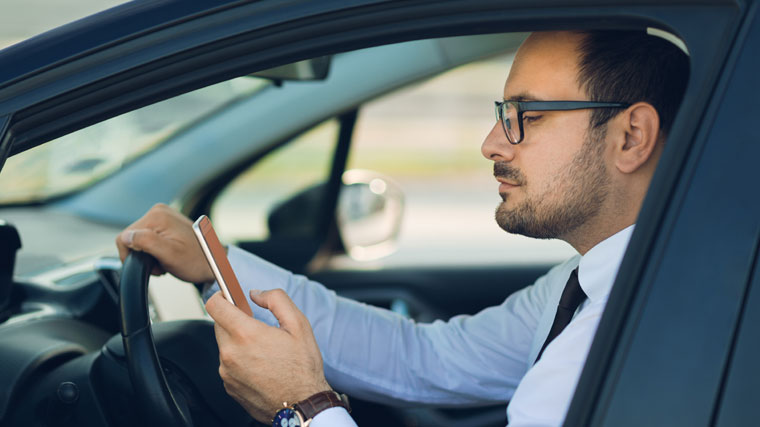Distracted Driving Is Not An Accident

Answer a few questions and we'll provide you with a list of primary care providers that best fit your needs.
It’s easy to be distracted while you’re driving. It’s also dangerous. Each year almost half a million people are injured in the U.S. as a result of distracted driving. And in 2020, distracted driving killed more than 3,100 people in the U.S.
Letting yourself become distracted while driving is not an accident, says Dr. Gregory Semon, director of the Miami Valley Hospital Injury Prevention Program. “The word ‘accident’ implies that the incident was no one’s fault. When the occurrence is due to distracted driving, the correct word is ‘crash’” he explains.
It’s Not Just Cell Phones
“These days we think of the cell phone when we think of what distracts us when we drive,” says Dr. Semon. Yes, they can be a major distraction. But distracted driving was around long before cell phones came on the scene. Dr. Semon adds to the list of distractions:
- Eating
- Fooling with the climate controls, radio, or other gadgets
- Rubbernecking to see something going on outside the car
“We think it’s safe to take our eyes off the road for a few seconds,” says Dr. Semon. “But at 65 mph it takes just three to four seconds to travel the length of a football field. That’s like driving 100 yards with your eyes closed.”
As an emergency physician, Dr. Semon cares for people every day, who have been injured due to distracted driving. He has treated drivers who have hit trees or telephone poles because they weren’t giving the road their full attention. “But the worst cases are when other people or bicyclists or other vehicles are hit as a result of distracted driving.” He said it’s not uncommon to see traumatic brain injuries; face and neck fractures; rib and spine fractures; injured liver, spleen, and intestines; fractured pelvis, hip and legs; dislocated knees.
Seatbelts And Airbags Help, But Prevention Is Best
Seatbelts help keep those in the car safe. But they obviously don’t protect those outside your vehicle. And while Dr. Semon recommends you always wear a seatbelt, he said that in a car crash the seatbelt can actually cause harm. “It’s designed to keep you in place, but in doing so it can slide up and injure your neck, or your abdomen, and that can cause internal injuries,” he explains. And airbags, while designed to protect you, can also cause injury. “That’s why preventing a crash by not letting yourself or the driver become distracted, is best.”
Although ages 16-24 is the group most commonly associated with distracted driving, Dr. Semon stresses that any driver, regardless of age, can become distracted.
How To Reduce the Risk of Distraction
To lower your chances of becoming distracted, Dr. Semon provides this advice:
- Stay aware. “You’re in the car to safely get from point A to point B. There are very few things that warrant taking your eyes from the road. Even when I get an emergency phone call from the hospital, I think it can wait until I’m able to pull over.”
- Use the technology in your phone, if available, to deactivate your phone when your car is moving. That way it won’t distract you.
- Use hands-free functions if your car is equipped. “Let the car speak your text messages to you; let it make your calls, answer the phone, or choose the music you want to hear so you can keep your eyes on the road.”
Set a Good Example
Following Dr. Semon’s advice has the added benefit of setting a good example for your kids. “Kids take their cues from their parents, but also from their friends. Realize the influence you have on kids and set a good example,” Dr. Semon insists. He adds: “Know that in Ohio we have a no-texting-while-driving law. And other states, 24 in all, have a no-handheld-device-while-driving law.”
Answer a few questions and we'll provide you with a list of primary care providers that best fit your needs.
Source: Gregory Semon, DO; National Highway Traffic Safety Administration





